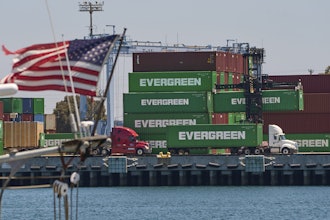
 Anne van de Heetkamp
Anne van de HeetkampBusiness decisions are made based on available information. These can involve sourcing materials, locating factories and engaging suppliers.
Moreover, with every decision made, a number of factors are taken into consideration. For instance, a company would not want to source products that appear to be cost-efficient, only to learn they carry anti-dumping rates. Understandably, finding a factory in a country with critical Free Trade Agreements in the same markets you export to would be ideal— assuming all other aspects being equal. However, without accurate and up-to-date global trade content — a collection of global trade regulations and regulatory knowledge — decisions made would not be properly informed. Uninformed decisions can lead to disastrous results.
Types and Importance of Global Trade Content
Global trade content spans a wide variety of components. The core items are typically:
- Harmonized System (HS) or Harmonized Tariff System codes
- Duty rates, including preferential duty rates and indirect tax rates
- Compliance details such as restricted party lists, export and import license requirements, permit information, inspection information, and shipping document requirements
In addition to the core items mentioned, marking and labeling requirements, exchange rates, customs clearance codes, and trade statistics can also be considered important to trade content.
Another factor to understand in the importance of global trade content is customs duties are a non-recoverable cost (net cost) to business. In other words, the importer cannot recover the duties paid, unless included in the price. Reducing duties allows companies to be more competitive from a pricing perspective or increase the profit margin. Conversely, non-tariff barriers — like license requirements — can lead to major delays. Delays such as disruptions in the supply chain can have implications beyond a customs agent — like a company’s shelves staying empty, their buyers getting upset, and their goods potentially spoiling.
In short, trade content has to be used to obtain necessary insight in order for companies to plan ahead.
Types of Decisions and Insights Affected
Global trade content affects a myriad of business decisions and processes, which is why it’s important to know the types of decisions that can be made and anticipate the results.
- Long-term business strategies set the stage for items like where to locate a factory, and the number of elements related to setting it up and maintaining it. The typical drivers to these strategies are market proximity, quality, costs, and reliability.
- Self-owned factories include the same factors as long-term strategies, but have additional components to consider such as: tax breaks, availability of labor, semi-finished product and raw materials. And as additional, but not mandatory pieces to consider, decision makers should think about duty rates for total landed cost comparison (once the product lands at the buyer’s door), rules of origin, future duty rates and license requirements. All of the optional considerations help determine whether preferential rates can be applied, if certain benefits still exist and if non-tariff barriers may affect timelines or shipping eligibility.
- One-time sourcing decisions pertain to companies that have an option to source from a large number of countries and suppliers. In order to properly evaluate prices, the buyer should make a total landed costs comparison, which would include the price of goods, freight and duties.
Knowing the types of decisions that are commonly affected by trade content will help prepare you for what may follow. But, what can guide you even further is being familiar with the possible results when importing and exporting — and how to combat negative outcomes.
- Completing an import and export compliance check confirms the goods can be imported. This stage can reveal when required shipping and import documents are missing, and can mean delays.
- Reconciliation of planned expenses and actual costs is a fixed part of supply chain auditing. It brings the decision and costs incurred full-circle by providing final numbers on items, which were just estimates.
Overall, global trade content is involved in decisions and their impacts for the estimated and actual landed costs. Impacts can range from involvement in duty rates, HS codes and rules of origin, which are all needed to calculate estimated landed costs, determine Free Trade Agreement eligibility and compile actual customs duties.
Accurate and Up-to-Date
Sourcing global trade content seems simple, but it is important to stress that it continuously changes. Duty rates can shift daily, monthly or over several years. For instance, license requirements can change overnight and Free Trade Agreements can be concluded at record pace taking just a few months. One change that can be anticipated, however, happens every five years when the World Customs Organization (WCO) overhauls HS codes. The update will affect the Harmonized Tariff Codes for many products, which can change applicable duty rates — the next set of changes will be enacted in January 2017.
Depending on the amount of trade content data needed, it may become difficult to source and maintain everything necessary. To help, a variety of service providers, industry organizations or trade organizations can assist in making sure all data is accounted for. Some organizations willing to assist are the World Trade Organization (WTO) and American Association of Exporters and Importers (AAEI).
As with any action, businesses don’t want content which fails to incorporate the latest legislative changes or content that is incomplete. These result in non-compliance and can mean administrative penalties, loss of exporting privileges and, in some situations, jail time.
Conclusion
Global trade content may not be an obvious part of the supply chain, but it is a key part of both the processes and decision-making. Not using available trade content, or it using incorrect content, can have a lasting effect on the organization’s success for years to come.
Anne van de Heetkamp is the director of TradeBeam at Aptean.























